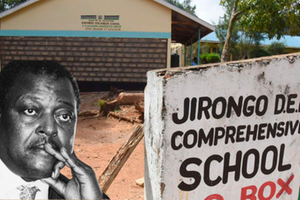Premium
13,000 who came into contact with infected people yet to be traced

What you need to know:
- The Ministry of Health’s latest report notes little contact tracing is taking place, with only eight of 47 counties submitting reports.
Contact tracing is a way of tracing the routes of viral spread and severing them before they affect more people.
The government is yet to trace 13,000 people who came into contact with those who have tested positive for the virus, the Nation has learnt.
Data from the Health ministry shows that, out of the 14,168 cases recorded on Wednesday, some 10,433 people who came into contact with them are yet to be traced and might be infecting others.
Contact tracing is a way of tracing the routes of viral spread and severing them before they affect more people.
However, acting Health Director-General Patrick Amoth said it is not an easy task since it calls for more staff, more money and more cooperation.
“Listing and contact tracing is very expensive and since community transmission is deeply rooted, this activity might yield little,” Dr Amoth said.
HIGHEST INFECTIONS
He added that the exercise would be particularly difficult in the hotspots of Nairobi, Kiambu and Mombasa counties, given that they are among those with the highest infections.
Nairobi County has the highest number of contacts to be traced at 2,545, followed by Mombasa with 224.
“It is recommended that all close contacts of confirmed cases be traced in the early days but with the speed of transmission of the virus, those requiring follow-up have increased and this is not going to be easy for the government,” Dr Amoth said.
He said the government is focusing on reducing mortality and has since designed county-specific interventions based on the phase of the pandemic.
“All the counties are in phase two of the pandemic and they are going design their own contact tracing depending on the numbers. For instance, we cannot compare West Pokot, Samburu and Baringo, which have few infections, with other counties,” Dr Amoth said.
In the past week, the country has recorded about 3,500 new cases, a clear sign that community transmission is widespread, and the only way to cut the transmission route is through contact tracing.
The Ministry of Health’s latest report notes little contact tracing is taking place, with only eight of 47 counties submitting reports.
BIG CHALLENGE
Dr Majid Twahir, the associate dean for clinical affairs and chief of staff at the Aga Khan University Hospital, said tracing and isolating contacts was working in the initial stages because there were few chains of transmission. It was easy for the government to trace contacts when the number of infections was low and within Nairobi.
“The government has done a great job, but it has not been easy to trace all contacts because the numbers are high and continue to rise daily,” he said.
Staffing also remains a challenge since the country depends on the same team that started contact tracing to do it now even with the increase in numbers.
“Human resources is a big challenge. We have only four employees, while the remaining 28 are volunteers. Managing the volunteers is not an easy task because they are not always motivated, and this hampers the work,” said Dr Francis Kuria, an incident commander, Contact Tracing and Data Management.
Contact tracing is also hampered by the fact that it takes about seven days to get the results, unlike the 24 hours initially.





